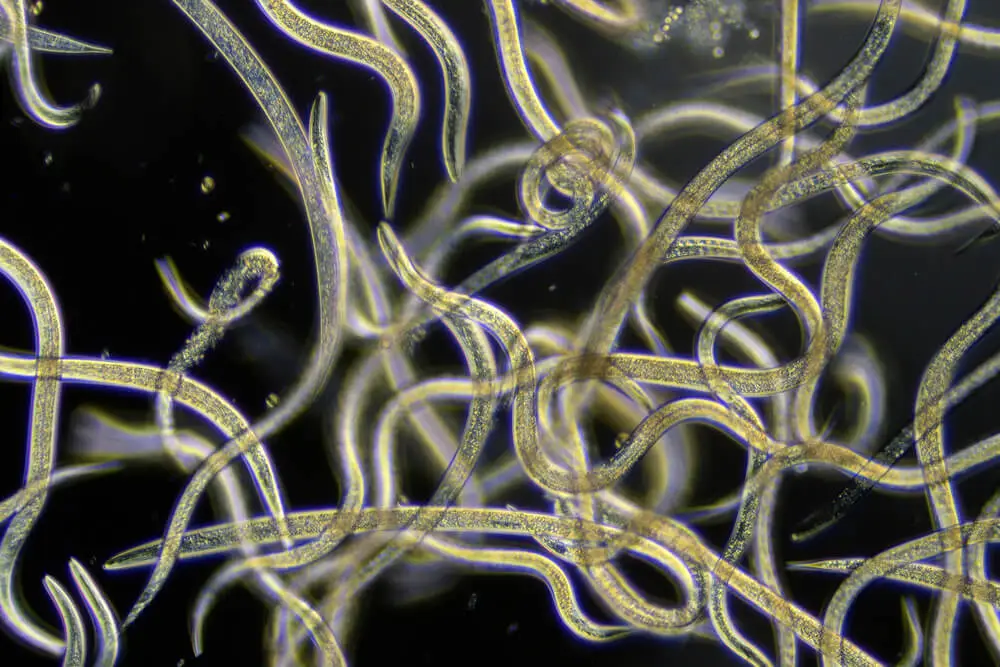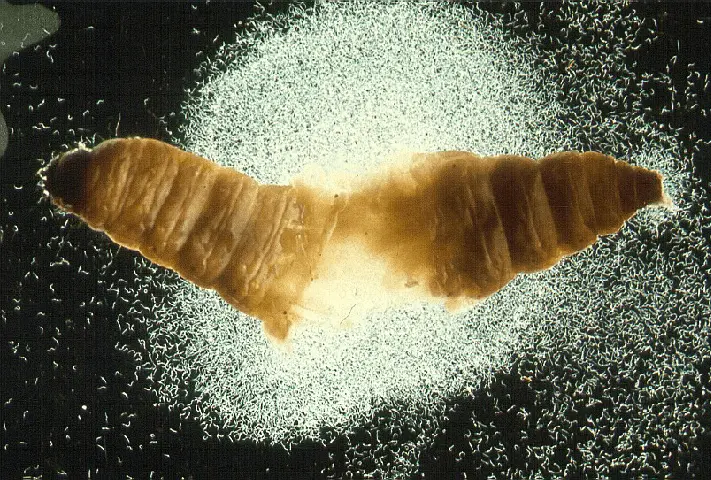While in the field, you might observe different kinds of pest incidences, ranging from pests affecting plant canopies to soil-borne pests. Controlling soil-borne pests is very critical in realising the yield potential of improved cultivars in several agricultural crops. But how can we control these soil-borne pests organically?
Being an organic farmer can sometimes feel overwhelming when it comes to managing these soil borne pests in the field, as the application of biopesticides can also sometimes take more than 2-10 days to control pests, leading to an increased incidence. At this point, you might also feel like considering the usage of chemical pesticides for your crops.
But what if I told you that you could still organically control these soil-borne pests within 48 hours?
How to identify soil-borne pest infections?
Pests like white grubs, and root grubs feed on roots, resulting in drought stress that leads to pale, wilted plants. Infestation by fungus gnats leads to sudden wilting, loss of vigor, poor growth and yellowing of plants.
These infestations directly affect the growth and yield of crops. Therefore, it is very important to adopt an effective method for controlling soil-borne pests.
Entomopathogenic Nematodes: An Organic Solution for all Soil Borne Pests
What are Entomopathogenic Nematodes?
These are not the nematodes that cause damage to crops but instead save our crops from pesky pests. Entomopathogenic nematodes are beneficial nematodes that affect a variety of caterpillars, cutworms, crown borers, grubs, corn rootworm, cranefly, thrips, fungus gnat and beetles without harming humans, animals, plants or earthworms. Therefore, they can be a simple way to manage all soil-borne pests.

Learn how to control non-beneficial nematodes from our previous blog
How do Entomopathogenic Nematodes Control Soil-Borne Pests?
Only nematodes in their infective juvenile stage survive in the soil and penetrate insect pests.

The nematodes, after entering the host, release symbiotic bacteria. These bacteria quickly kill the host within 48 hours.

Best Source of Entomopathogenic Nematode

Criyagen Entomopathogenic Nematode is an organic pesticide containing entomopathogenic nematodes for the management of soil borne pests in various crops. It contains infective juveniles, which kill the pest within 48 hours through its mode of action. Criyagen Entomopathogenic Nematodes kill soil pests like root grubs, termites, root weevils, cutworms, and other soil borne pests in various crops.
How To Apply Criyagen Entomopathogenic Nematode?
Criyagen Entomopathogenic Nematode is directly applied to the soil as a drench or through drip irrigation, ensuring that the soil is moist before application.
Soil drench: Mix 2-3kg of EPN in 100-200 litres of water and drench near the root zone in one acre area.
Drip irrigation: Mix 2-3 kg of EPN in 100-200 litres of water and let it drip in such a way that it is directed near to the root zone.
Be it a houseplant or an organic farm, controlling pests is a cumbersome task. We often rely on organic pesticides, but sometimes it’s too slow, so we might think about using chemicals instead. However, it is at this crucial point that Criyagen Entomopathogenic Nematode comes into play. The application of EPN is not only user-friendly but also has a quick knockdown effect on soil-borne pests, no residue problem, eco-friendly, helping in increase crop yield, making it a great choice for organic farming.
Get Criyagen Entomopathogenic Nematode for your fields or houseplants from AgriApp, and to know more about organic farming tips and information, click here